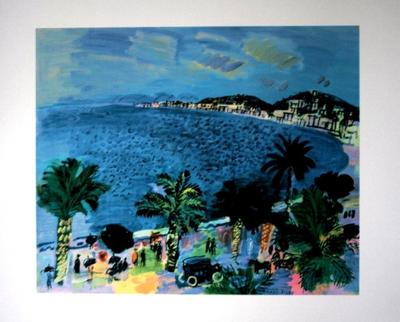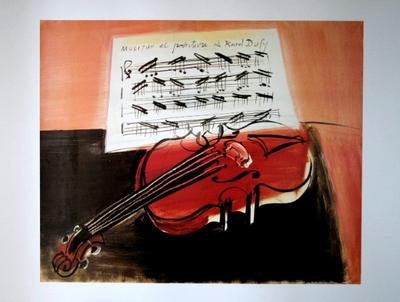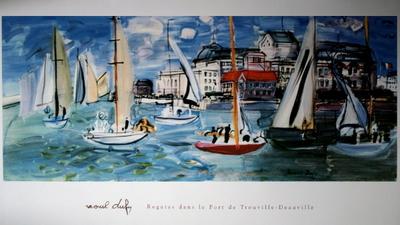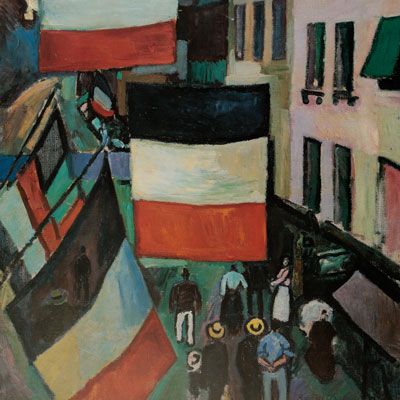Tel : (+33) 4 94 63 18 08
9am - 6pm from Monday to Sunday
All products Raoul Dufy • Products of the topic Flowers
Raoul Dufy Silk tie - Tulips and leaves (red)
REF : CRA-DUFY-25
In stock
Only 1 in stock
Unavailable
69,00 €
(76.36 USD)
Raoul DUFY Pure Silk Tie
"Tulips and leaves (red)"
100% silk
This Raoul DUFY necktie is hand made in France and measures 150 cm in length with a classically English blade width of 7 cm.
Fauvism
Fauvism is an artistic movement in painting that emerged at the end of the 19th century. It was created by a group of artists who gathered around Henri Matisse and sought to explore new forms of expression using bright colors and simplified forms. The main artists associated with Fauvism are Henri Matisse, André Derain, Raoul Dufy, Kees van Dongen, Albert Marquet, Maurice de Vlaminck, and Georges Braque. Their works, characterized by the bold use of color, had a considerable impact on the evolution of modern art. The term "Fauvism" was first used during the 1905 exhibition in Paris, which brought together the works of these artists. The exhibition was a huge success and sparked a lot of controversy, as the works presented were very different from what was considered "normal" at the time. Henri Matisse, considered one of the main initiators of the Fauvist movement, was one of the first to use bright and intense colors in his paintings, and his style was an example for many other artists.
Discover the artist
Dufy Raoul
Raoul Dufy is a painter, draftsman, engraver, ceramist, decorator and creator of fabrics, tapestries and French furniture.
From his sixteenth year, he studied at the Beaux-Arts in Le Havre before going to Paris. First influenced by the Impressionists and the Fauves, he finds, by discovering Cézanne, his way through a very figurative cubism where large bands of color punctuate street scenes with multiple details, all appearing embraced in a single movement. ..
Raoul Dufy has worked extensively in decorative art for prints on fabric, notably with couturier Paul Poiret.
Dufy Raoul
Raoul Dufy is a painter, draftsman, engraver, ceramist, decorator and creator of fabrics, tapestries and French furniture.
From his sixteenth year, he studied at the Beaux-Arts in Le Havre before going to Paris. First influenced by the Impressionists and the Fauves, he finds, by discovering Cézanne, his way through a very figurative cubism where large bands of color punctuate street scenes with multiple details, all appearing embraced in a single movement. ..
Raoul Dufy has worked extensively in decorative art for prints on fabric, notably with couturier Paul Poiret.
Dufy Raoul
Raoul Dufy is a painter, draftsman, engraver, ceramist, decorator and creator of fabrics, tapestries and French furniture.
From his sixteenth year, he studied at the Beaux-Arts in Le Havre before going to Paris. First influenced by the Impressionists and the Fauves, he finds, by discovering Cézanne, his way through a very figurative cubism where large bands of color punctuate street scenes with multiple details, all appearing embraced in a single movement. ..
Raoul Dufy has worked extensively in decorative art for prints on fabric, notably with couturier Paul Poiret.
Dufy Raoul
Raoul Dufy is a painter, draftsman, engraver, ceramist, decorator and creator of fabrics, tapestries and French furniture.
From his sixteenth year, he studied at the Beaux-Arts in Le Havre before going to Paris. First influenced by the Impressionists and the Fauves, he finds, by discovering Cézanne, his way through a very figurative cubism where large bands of color punctuate street scenes with multiple details, all appearing embraced in a single movement. ..
Raoul Dufy has worked extensively in decorative art for prints on fabric, notably with couturier Paul Poiret.
Dufy Raoul
Raoul Dufy is a painter, draftsman, engraver, ceramist, decorator and creator of fabrics, tapestries and French furniture.
From his sixteenth year, he studied at the Beaux-Arts in Le Havre before going to Paris. First influenced by the Impressionists and the Fauves, he finds, by discovering Cézanne, his way through a very figurative cubism where large bands of color punctuate street scenes with multiple details, all appearing embraced in a single movement. ..
Raoul Dufy has worked extensively in decorative art for prints on fabric, notably with couturier Paul Poiret.

































































































